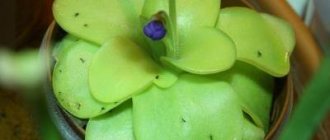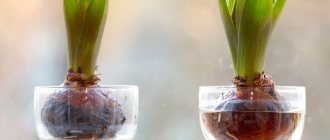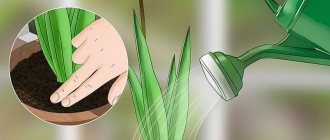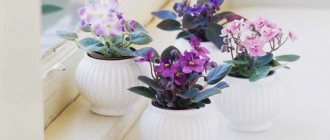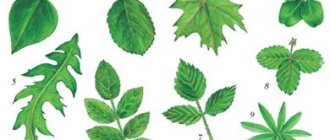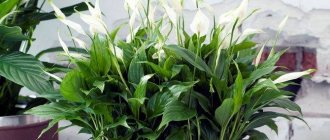Chamomiles grow well not only in gardens, but also at home. Most often, potted cornflowers or low varieties of pyrethrum are on sale. However, you can grow such flowers yourself. In order for domestic daisies to develop normally, they need to be provided with a well-lit windowsill and properly care for the bushes.
Homemade daisies serve as decoration for any room.
How often to water daisies in a pot?
species "Chamomile"
| The soil | Sandy, well drained |
| Possible colors | white yellow green |
| Illumination | Lots // West, south orientation, may require several hours of direct sunlight |
| Watering | Medium // Deep watering 2-3 times a week |
| Difficulty of care | Little // Does not require special requirements for growth and flowering |
Variety of species suitable for home
Many people are interested in whether it is possible to grow chamomile at home. This is quite real. However, first of all, you need to choose the right plant variety.
The most popular types include:
- Medicinal. To grow a plant at home, just dig up a few bushes in the meadow and transplant them into a pot. In order for homemade daisies in pots to develop normally, they need to be watered regularly. In this case, moisture stagnation should be avoided. Fertilizing and spraying with warm water are of no small importance.
- Tongueless or odorous. This plant is also considered medicinal. Its distinctive feature is the almost complete absence of petals. In fact, they exist, but they are small in size.
- Roman or navel. Another type of medicinal crop. You can safely grow it at home.
- Decorative. In flower shops you can buy seeds of decorative hybrids. The height of indoor daisies in pots does not exceed 20-25 cm. For these plants, you should choose light, nutritious soil and a sunny place. As fertilizing, it is worth using special products for flowering plants.
- Maidenwort or pyrethrum. At home, you can plant varieties called Snow Globe or Golden Globe. They will bloom in 80-90 days. These plants respond well to pruning.
- African or Gatsaniya. This is a low-growing crop, the height of which does not exceed 30 cm. The main feature is considered to be a wide variety of shades. So, there are orange, white, yellow, red varieties. Bushes with uneven petal color look very beautiful. This crop should not be planted in heavy or wet soil.
The aroma of the girlish variety is not tolerated by flies and many other pests. In addition, this smell has a beneficial effect on the nervous system and helps get rid of headaches.
A medicinal variety of the plant is suitable for cultivation.
What components of chamomile are good for health?
The healing properties of chamomile are known to doctors of almost all specialties. Infusions, decoctions, and chamomile tea are used in the treatment of various diseases. Such a wide scope of its application is due to its biological composition, components found in the plant. First of all, it is worth highlighting:
- ascorbic acid;
- beta-carotene;
- matrixin;
- selenium, potassium, zinc and copper;
- caprylic, salicylic, isovaleric acids;
- gum;
- quercetin;
- flavonoids;
- nicotinic acid;
- polysaccharides;
- tannins;
- essential oil.
All these components have a beneficial effect on the body of adults and children.
Good to know
Herbalists should take note: KP’s guide to the healing properties of plants
Pericallis - the main flyer of the spring season
Among indoor plants, true annuals can rarely be found. Most crops that are grown as annuals are actually perennials and, subject to proper wintering and a cold dormant phase, can provide joy for many years. But the pericallis in the rooms, unlike in the garden, is really an annual plant that blooms for only a year and dies when trying to preserve it.
But the way it blooms: bright and colorful, with acrylic tones of color and unpredictable combinations of variegated two-color variations, this plant can make anyone fall in love with it in one season. Raspberries usually appear on sale on the eve of March 8th. These living bouquets, reminiscent of luxurious artificial arrangements, compete in attractiveness with forced bulbs and other spring stars, but are undoubtedly the first to attract attention.
Plants, today classified as members of the genus Pericallis, are known to most flower growers and gardeners under completely different names - ragworts and cineraria (hybrid, garden or bloody). The plant is often sold under the name bloody cineraria. But the brightly flowering annuals that are grown indoors are pericallis hybrids (Pericallis x hybrida or Pericallis hybrida) - different varieties that have undergone long-term selection. Pericallis belongs to the Compositae family.
Pericallises are compact herbaceous plants, the height of the bushes, even with inflorescences, does not exceed 20-70 cm. Large, velvety and very brightly colored leaves with relief veins on the surface are collected in a basal rosette. The leaves of pericallis are reminiscent of primroses and saintpaulias, but unlike the latter they create only a bright pillow for a cap of inflorescences.
It is difficult to appreciate the heart-shaped leaves under the flowers, but the beautiful unevenly jagged edge only decorates them. The petiole is usually winged, the surface is velvety due to the light, pleasant-to-touch edge.
Flowering of pericallis lasts, as a rule, only a month and a half. It does not last for the whole year, but even within a month the splendor of the chamomile fashionista is fully revealed. From February to May, bright pericallis bushes can become the best color accent in the interior. Modern varieties and mixtures of varieties, especially Dutch selection, can bloom for up to 4-6 months, but for this they need truly ideal conditions, and in our country it is rare to enjoy such a show.
Pericallis, like all representatives of the Astrov family, have basket-like inflorescences, collected in complex corymbs and forming a kind of cap over the greenery. The diameter of flowers ranges from 2.5 cm to 5-8 cm in the best varieties and variety mixtures. Large and bright, they consist of a fairly large “center” of tubular flowers and a circle of lanceolate, spatulate or ovate reed flowers.
The shape of pericallises resembles simple daisies, daffodil daisies or non-double asters. Most often, plants produce simple inflorescences, although recently the palette of double varieties has been actively expanding. Under normal conditions, each flower of pericallis lasts a very long time and only in a warm environment do the baskets wither within a few days.
Depending on the structure of the bush, height and flowering characteristics, pericallis varieties are divided into several lines or groups - large-flowering Grandiflora up to 40 cm high, compact cushion-shaped, with abundant flowering - Nanas and tall, from 50 to 70 cm, with star-shaped, narrow-petalled daisies - pericallis Stellata. Varieties and variety mixtures are selected according to the flowering palette.
A variety of colors is characteristic not only of the “petals”, but also of the middle of the inflorescence. The reed flowers of pericallises can be painted in classic yellow tones, and in different shades of pink, red, and cream. Pericallises with an almost black “eye” or rare blue colors are especially popular. And the main palette of daisies can offer the most daring and unexpected combinations.
Single or two-tone, pericallises are always dazzling acrylic. White, pink, purple, red, lilac, blue, indigo are represented in both the darkest and brightest candy colors, rare shades and luxurious undertones reminiscent of variegated fabrics.
Hybrid pericallis (Pericallis hybrida), or garden groundsel, or bloody Cineraria.
Plant propagation methods
The culture can be propagated in different ways. This is done by seed method, seedling method, cuttings or division of roots. For propagation, only healthy bushes are allowed to be used.
After the peduncles ripen and the petals dry, the brown baskets with seeds need to be cut off and dried. This should be done in a room with good ventilation. Then the seeds need to be collected, sorted, cleaned of debris and placed in a special bag. Such grains can be used as planting material.
A heavily overgrown bush can be divided. As a result, you will be able to get several plants at once.
To do this in the fall, you need to dig up the chamomile and carefully divide the bush. This must be done so that the roots are distributed evenly. After which you can plant the plant in a new container and be sure to feed it.
The culture can be propagated by seeds.
Pests and diseases
The culture has a fairly strong immune system. However, if the rules of care are not followed, the plant may encounter certain diseases.
To avoid the development of pathologies, you need to adhere to the rules of prevention. It is important to avoid stagnation of moisture, otherwise the plant may suffer from gray rot, rust, fusarium and other fungal infections.
Before planting chamomile, the soil must be treated with fungicidal substances.
The timely removal of dead plant fragments and the use of insecticidal preparations are of great importance.
What conditions are needed when growing in an apartment?
How to grow daisies at home? To get strong and healthy bushes, you should plant correctly and provide the plants with adequate care.
How to grow in a pot?
When growing perennial varieties at home, many nuances should be taken into account:
- The optimal place for this flower is the kitchen. Here it can grow for a whole year and will be constantly under the supervision of the owner. However, the main condition is still considered to be a sufficient amount of light. Culture requires the south side. And if there are no windows in the right direction, special phytolamps can help.
- Adequate watering of plants is of great importance. The soil should remain moist at all times, but excess moisture is unacceptable. Drying out the substrate also negatively affects the development of delicate crops.
- Bushes can be sprayed every day. However, for this you need to use warm, settled water.
- The crop should be fed from early spring to autumn.
- The plant needs to be replanted as the entire pot is filled with the root system.
If chamomile is located near infected bushes, it produces a healing effect on them.
A medicinal plant grown at home can be safely used for inhalation and preparation of healing decoctions.
When growing a plant, you need to follow a number of rules.
Melissa officinalis on the window
Benefits : Melissa has anti-inflammatory and antibacterial properties. Added to tea it soothes, and applied externally it reduces itching from insect bites. The herb has a beneficial effect on digestion and improves mood.
Growing lemon balm at home is as easy as growing mint. You can transplant the bush into a pot in the fall, or sow it with seeds, and after the sprouts become 5-7 cm in height, plant them. You need to feed lemon balm no more than once a year, water it every 3-4 days, it is not necessary to add additional light - it grows well in the shade and with short daylight hours. But you need to trim it regularly, otherwise the bush will take up the entire window.
Application
Everyone knows the use of chamomile for medicinal purposes. The culture is saturated with a complex of useful substances that have a beneficial effect on the human body. However, flowers are also used for cosmetic and household purposes.
At home
The main everyday purpose of chamomile flowers is decorative. The bushes look neat in a flower bed or in a pot. Chamomile flowers are stored for a long time in cut form, so they are used to make a variety of flower arrangements. Simple and unusual flowers are used to decorate banquets, weddings, and other holidays. Chamomile flowers are considered a symbol of love and virgin beauty.
In the cosmetics industry, chamomile is included in hypoallergenic additives to create creams for people with allergic reactions, and is also used as an additive in shampoos, creams and other cosmetic and aromatic products. Rinsing your hair with chamomile infusion helps strengthen your hair and normalize the strength of your nails. When regularly rubbed with chamomile infusion, the skin becomes smooth and soft. With the help of chamomile, you can fight teenage acne and pimples, as well as freckles and skin pigmentation.
In medicine
Chamomile and common chamomile are included in the Russian Pharmacopoeia. The plant has many beneficial properties, including:
- restores appetite;
- eliminates inflammation;
- helps increase the flow of bile;
- reduces itching and burning, is used to treat skin rashes;
- reduces pain;
- has a bactericidal effect;
- increases sweat separation;
- restores the menstrual cycle;
- has an antispasmodic effect.
Chamomile is used to treat intestinal pathologies, since it quickly removes toxins from the intestines and has an enveloping property. The flowers of the plant are used during the peak of a cold, as it helps to recover faster. Chamomile tea has a calming and antimicrobial effect, helping to fight nightmares and insomnia. Chamomile helps produce insulin, which lowers blood sugar levels.
In folk medicine
In folk medicine, chamomile is used more widely than in traditional medicine. The culture is indicated for the treatment of the following pathologies:
- liver pathologies associated with impaired bile release;
- inflammatory processes on the skin, including purulent ones;
- boils and abscesses;
- helminthic infestations;
- skin wounds;
- gastritis;
- colitis;
- inflammatory diseases of the oral cavity and pharynx;
- disorders of gynecological etiology;
- excitability and constant stress.
To treat each pathology, different consistencies of decoctions and infusions are prepared. Chamomile tea, which contains a large number of beneficial components, is also of great benefit to the body.
Recipes
- Chamomile decoction - to prepare a healing solution, 4 tbsp. spoons of dry crushed chamomile flowers are poured with a glass of boiling water. The mixture is placed in a water bath for a quarter of an hour. After the time has passed, boiled warm water is added to the solution to the original volume. The solution is filtered and taken one third of a glass three times a day.
- Infusion - a teaspoon of the dry mixture is poured with a glass of boiling water and left to infuse for a third of an hour. The filtered mixture is consumed an hour before bedtime, one glass per day. The solution helps to improve sleep, quickly calm down and fall asleep soundly.
- For inflammatory pathologies of the respiratory system, a mixture of chamomile, linden, peppermint and black elderberry flowers in equal proportions helps. The collection is thoroughly mixed, a tablespoon is poured with boiling water and left to infuse for several minutes. The resulting tea is drunk hot three times a day.
- For rhinitis, a rinsing solution obtained by infusing a teaspoon of chamomile in a glass of boiling water helps.
- An infusion of a mixture of equal parts of yarrow, chamomile and Vakhta helps to get rid of flu symptoms. The solution is prepared by infusing 4 tablespoons of the mixture in 3 cups of boiling water, taking 3 cups per day
- To make your skin smooth, wash your face daily with chamomile infusion prepared from a glass of water and a tablespoon of chamomile.
It is very difficult to count all the recipes that use chamomile, since traditional medicine actively uses the plant in treatment. It is important to understand that although chamomile is beneficial, it must be used carefully.
When and how to collect chamomile flowers
The optimal time for collecting chamomile is considered to be the beginning of flowering, when the crop is saturated with a large amount of useful substances. The flowers are carefully picked and dried in a well-ventilated place. An oven is also suitable for drying, but the procedure is carried out carefully, at low temperatures. During drying, the flowers are constantly turned over so that the plant dries evenly. Such flowers should be stored in a dry, dark place, in paper bags.
Contraindications
Chamomile is considered one of the hypoallergenic products, but even it often causes an allergic reaction in children and adults. Therefore, you can use culture solutions and decoctions carefully, after consulting with your doctor. In addition, chamomile should not be used for inflammation of the stomach with increased secretory activity. Flowers are contraindicated for the release of bile, as well as for kidney pathologies.
In landscape design
Chamomile is considered a lacy beauty in the garden. Neat and simple flowers fit into the design of the garden, carefully spreading their petals and pleasing the eye of everyone passing by. The flowers look unusual, both in single and group plantings, along borders and as a background plant. You can also grow flowers in rock gardens, since they are unpretentious. Asters, peonies, as well as roses or marigolds are chosen as neighbors for perennial chamomile. The flowers look good with both tall and short plants.
Interesting facts and legends
- To date, more than 300 hybrid varieties of common chamomile have been identified.
- Chamomile flowers are used for fortune telling, since each inflorescence has a different number of petals.
- Chamomile is considered a symbol of the sun and was used in ancient Greek rituals dedicated to the sun god.
- Flowers have long been used as medicinal flowers; in ancient times, bouquets were placed with seriously ill patients, who inhaled the aroma of the bouquets. It was believed that the patient would feel better from the healing smell.
- Using chamomile helps cope with both oily and dry skin.
- Blondes who regularly take chamomile decoction have brighter hair shine.
- In Tibet, monks used chamomile to prepare a secret healing decoction that cured serious illnesses.
Chamomile is a truly unique medicinal plant that allows you not only to show off the simplicity and delicacy of its flowers, but also to treat a huge number of diseases with the help of raw materials obtained from the crop. The article describes various types of crops, methods of growing chamomile, as well as rules of care and propagation, and the main use of bushes in medicine.
Violet tricolor (Pansy) on the window
Why it is useful: A decoction of viola (garden violet) is used for diseases of the urinary tract and nervous disorders. In addition, its leaves are used in the treatment of skin diseases, such as acne and eczema.
The main charm of this culture is its unpretentiousness. Tricolor violet grows without additional lighting on any window, because it loves partial shade, and also takes root well in standard soil for indoor flowers. Pansies should be sown in shallow containers, moistened abundantly, and covered with a lid. After the emergence of seedlings, thin out, and when the growth reaches 3-4 cm, prick out. This violet has a small root, so the pots can be shallow. It can even be grown in cups, but then not for use, but for decorative purposes.
Care for feverfew (by month)
Winter (January to February). You can even sow the seeds this early if you have access to extra light. Such early sowing will allow you to get flowering bushes as early as May.
March. Early flowering seedlings. Shoots appear in 7 - 11 days. To avoid thinning out the seedlings, small seeds are mixed with dry sand. Indoors, seedlings quickly stretch, so it is better to keep them on a windowsill near a window, on an insulated glazed loggia or on a veranda.
April. Sowing continues. This can be done both indoors and in greenhouses. In a greenhouse or under polyethylene, cover the seeds with a layer of soil 3-5 mm thick. In a cool spring, seedlings sometimes appear later, only after 15-18 days.
May June. When transplanting seedlings, make sure that the sprouts require a space of approximately 25 x 30 cm. At first, shade the seedlings from bright sun. Sow the seeds in an open area for the chamomile to bloom in late summer. Weeding of self-seeding plants. Replant overwintered chamomile bushes and self-sow in a new location.
July. Mass flowering of the chamomile plant. Replant volunteer plants and flowering shrubs in their new location. Water during dry periods. Apply fertilizers to poor soils. Trim faded inflorescences to avoid mass self-seeding. Sow seeds from flowering plants early next summer.
August. Trim the inflorescences. Replant flowering plants in pots and balcony boxes, moving them to the veranda, balcony or windowsill. Water in dry weather.
September. Continues to bloom, as mature plants tolerate frosts down to -4°C.
October, first half of November. Prune cover plants in early winter. Mulch the soil or use spruce branches to cover variegated pyrethrum.
Thyme on the window
Why it is useful : Used in decoctions for inflammation of the throat and mouth, it has expectorant properties, so it is often used for colds.
Thyme is very sensitive to soil, so if you want it to take root, prepare the soil in advance. The deep pot should contain slightly alkaline, organic-rich soil with a thick layer of drainage at the bottom. Sowing seeds can be done in the fall, then by winter the bushes will grow, or you can bring several plants from the garden into the house in October - they will continue to produce greens. Thyme needs the sunniest window, constant additional lighting, and the addition of humates every 1.5-2 months.
- Thyme (thyme): growing features
The spice thyme, known to many, can also decorate a flowerbed in a summer cottage.

